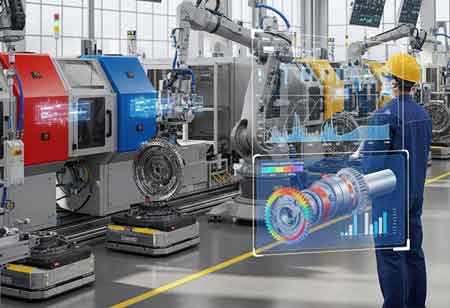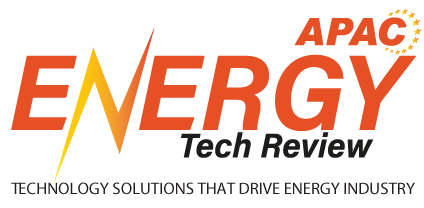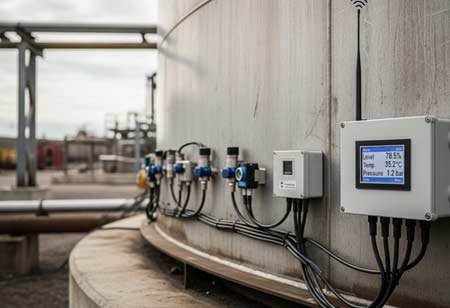CLOSE
Specials
I agree We use cookies on this website to enhance your user experience. By clicking any link on this page you are giving your consent for us to set cookies. More info
Be first to read the latest tech news, Industry Leader's Insights, and CIO interviews of medium and large enterprises exclusively from Energy Tech Review
Thank you for Subscribing
AI as a Strategic Partner in Canada's Industrial Future
In Canada, AI is shifting industries from past analysis to future predictions, enhancing efficiency, reducing downtime, and optimizing asset management for competitive advantage and cost savings.

By
Energy Tech Review | Wednesday, September 10, 2025
Stay ahead of the industry with exclusive feature stories on the top companies, expert insights and the latest news delivered straight to your inbox. Subscribe today.
Fremont, CA: In Canada’s manufacturing, energy, transportation, and utility sectors, the actual value of data now lies less in explaining the past and more in predicting the future, marking a shift from theory to practice. It is a tangible reality powered by artificial intelligence (AI), moving beyond simple forecasting to create smarter, more resilient, and more efficient operations. AI is revolutionizing how Canadian companies manage their physical assets, distribute critical resources, and optimize complex systems, resulting in significant cost savings, enhanced safety, and a more competitive edge.
AI-Driven Transformation in Maintenance and Energy Distribution
Industrial maintenance has traditionally relied on reactive or preventive models, often resulting in costly unplanned downtime and unnecessary repairs. AI-powered predictive maintenance (PdM) offers a more advanced solution by analyzing data from IoT-enabled equipment. In Canada, organizations have deployed AI-driven PdM systems, achieving a 35 percent reduction in unplanned downtime and a 40 percent reduction in overall maintenance downtime—delivering annual savings of approximately $2.3 million. Similarly, the oil and gas industry is leveraging AI to monitor pipelines and drilling equipment, enabling early detection of anomalies and mitigating the risk of leaks or spills.
In energy distribution, AI is emerging as the central intelligence of the smart grid, enabling dynamic and adaptive load balancing. By analyzing real-time variables such as weather forecasts, consumer demand patterns, and renewable energy generation, AI algorithms can predict and optimize energy flows, ensuring grid stability and reliability. A notable innovation is the coordination of distributed energy resources, exemplified by a Canadian AI platform that aggregates privately owned electric vehicles into a virtual energy storage network. This model supports the creation of a resilient, efficient, and sustainable energy ecosystem, positioning Canada to adapt to the evolving energy landscape.
Asset Optimization: Maximizing Value and Efficiency
Beyond routine maintenance and load balancing, AI is enabling a broader shift toward comprehensive asset optimization. By leveraging data analytics and machine learning, organizations can make strategic decisions throughout the entire asset lifecycle—from procurement and deployment to maintenance and retirement. AI models analyze historical performance data and operational metrics to recommend strategies that maximize asset value. This includes optimizing supply chains through more accurate demand forecasting, which enhances inventory management and reduces costs; improving resource allocation by deploying vehicles, personnel, and equipment more efficiently; and supporting strategic planning by simulating various investment scenarios to assess their financial and operational impacts. Canadian companies, in particular, are applying these capabilities to strengthen operations without relying on aggressive cost-cutting. Predictive maintenance alone has delivered measurable returns, with many organizations realizing ROI within 12 to 18 months.
Canada is uniquely positioned to be a global leader in AI-powered industrial transformation. The country features a world-class AI ecosystem, featuring leading research institutes such as the Alberta Machine Intelligence Institute (Amii), as well as a strong regulatory focus on data sovereignty and responsible AI. This provides a fertile ground for innovation and the development of tailored solutions for Canadian industries.
From the manufacturing hubs of Ontario and Quebec to the energy fields of Alberta and the vast infrastructure across the country, AI is not just a tool for automation—it is a strategic partner in building a more efficient, sustainable, and prosperous Canada. As industries continue to embrace the power of data and machine learning, the actual value of their physical assets is being unlocked, moving beyond traditional methods and ushering in a new era of intelligent operations.

Copyright © 2025 Energy Tech Review. All rights reserved






